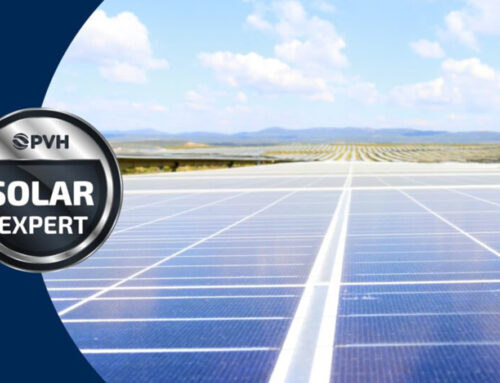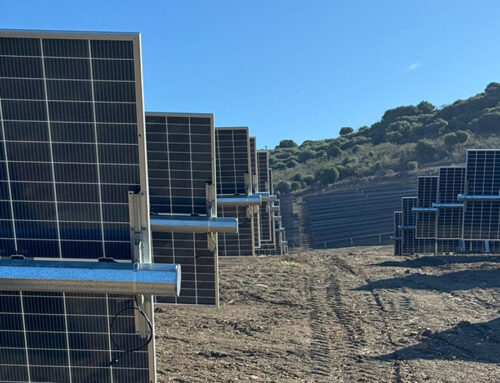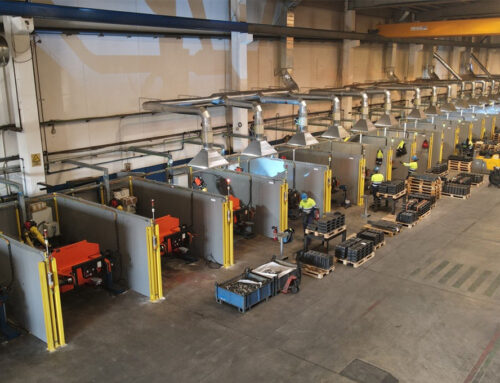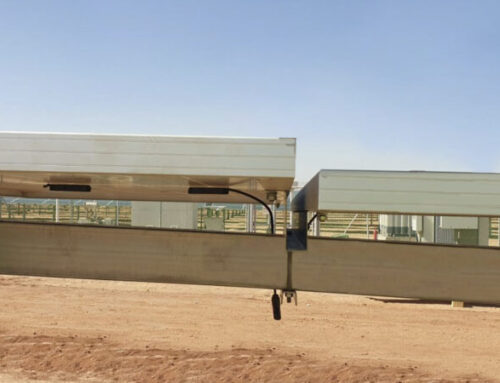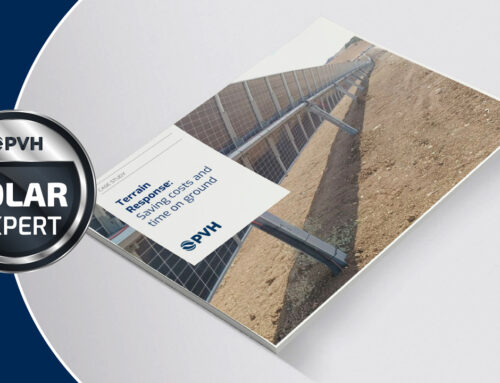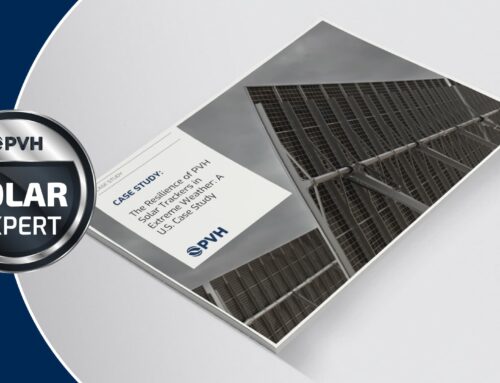Recognized experts analyze how to face extreme weather in the II seminar organized by PVH
19/02/2020


Recognized experts analyze how to face extreme weather in the II seminar organized by PVH
- PVH held its 2nd Seminar, under the title Wind and Testing. Module and controller mounting.
- The experts David Banks, David Melgar, Iván Arkipoff and Jaume Manero examined the current state of the solar photovoltaic sector from different perspectives.
- The importance of the stability of solar trackers, the need to adapt to regulations and data analytics to predict wind behaviour, the main issues.
PVH held its second seminar, entitled “Wind and Testing. Module and Controller Fixing”, and invited different experts to analyze the solutions that the photovoltaic industry is researching to face the challenges presented by extreme weather. Among the conclusions, three main pillars were highlighted to avoid possible damage to solar infrastructures: the importance of the stability of solar photovoltaic trackers and structures; the need to adapt to a regulation that has some shortcomings to ensure the long-term resistance of products; and the use of data analytics through Deep Learning to predict winds.
The day’s agenda was marked by presentations from the experts David Banks, President of CPP Wind Engineering Consultants; David Melgar, Project Director at Fraunhofer; Ivan Arkipoff, CTO of PVH and Jaume Manero, advisor to Techedge Group. PVH, which once again chose the Colegio de Ingenieros de Caminos, Canales y Puertos de Madrid as its meeting point, concluded the seminar with a round table discussion and a question and answer session with the attendees.
David Banks: “The key factor of trackers is their stability”
Banks, an engineer expert in issues related to the interaction of wind in solar trackers, began his talk Wind Loads on Single Axis Trackers by welcoming the attendees and explaining the origins and sectors (architecture; space engineering; wind in solar plants; structures and coatings and measurement of the indoor and outdoor environment) of the consultancy he has directed since 2000.
He then focused his intervention on a real case: the destruction of the Thomas solar plant by Hurricane Irma in 2017. He then listed the types of failures that can be observed in solar structures due to wind loads. In this sense, he explained the type of test that CPP carries out to study these meteorological phenomena and provide solutions to the sector.
He also referred to the fact that one of the main problems the photovoltaic industry is encountering is the ability to detect the risks that arise when the configurations of the solar trackers are changed. David Banks added: “It is important to study and analyze the aerodynamics needed to anticipate as much as possible the behavior of the winds and how these impact according to the solar tracker installed and its configuration”.
In this respect, he commented that there are three key factors that help to understand these risks: the behaviour of solar trackers with static and dynamic loads; weather forecasting; and instability. “If we can manage these three factors, the rest are easier to control, within a margin of action,” Banks said.
Finally, he asked the audience a series of questions about several assumptions and a series of recommendations and concluded by assuring that the “key factor of solar trackers is their stability” and added that “incidents and failures due to strong winds make people nervous, but we can solve it, there are answers in science and engineering”.
David Melgar: “Current regulation has some lacks, because it does not cover long-term degradation throughout the life of the modules”
The second presentation, entitled Mechanical Stability of PV Modules, was given by David Melgar, Project Manager at Fraunhofer, who provided an analysis of the regulations currently governing the resistance tests required for solar trackers to be marketed. In this respect, he highlighted two shortcomings that can affect the loss of power of the solar trackers: the long-term degradation over the entire useful life of the solar tracker, typical of the passage of time; and the thermographic changes due to temperature variation.
Currently, the IEC 61215 standard does not contemplate this type of testing, so an extension is needed to make these requirements unavoidable. “The current regulation has some shortcomings, as it does not cover long-term degradation during the useful life of the modules,” Melgar said in this regard.
On the other hand, he warned about the future of glass/glass technology, explaining that the trend is to reduce the thickness of the glass, “which could affect the stability of the modules. Glass/glass is more resistant to humidity and, on a mechanical level, allows the cells to suffer less, but if the industry turns to a more economic model, reducing the thickness, it is likely that its benefits will not compensate for the risk”, commented the Fraunhofer project manager.
Iván Arkipoff & Jaume Manero: “With Deep Learning, we seek to predict the future wind using the past wind, through an algorithm that analyzes its forms and is able to detect its behavior”.
Tracker Control Systems and Wind Alarm, the last lecture of the day, was given by Ivan Arkipoff and Jaume Manero, so the digital terrain took over the auditorium by the hand of Deep Learning. The CTO of PVH and the advisor of Techedge Group explained that they are working on a joint investigation to use an algorithm to forecast strong winds, with a 10 minute window.
“With Deep Learning we seek to predict future wind using past wind through an algorithm that analyzes wind time series and is able to detect its behavior. Deep Learning is a very precise tool, but detecting wind gusts is a very complex problem due to their variability and complexity,” Manero stressed in one of his speeches.
For his part, Arkipoff took the opportunity to talk about the use of new communication technologies in the controllers to transmit the wind alarm to the solar trackers. “LPWAN-type networks such as LoRa – explained the CTO of PVH – allow for more efficient, robust and direct communication, so that possible errors and delays in placing the installation in the defense position are avoided”.
David Banks, David Melgar, Iván Arkipoff, Jaume Manero, Eduardo Chillarón and Antonio de Dios presided over the round table and resolved doubts and concerns by answering questions from the audience, while the closing of the Seminar was carried out by Emilio García, COO of PVH.
A future based on learning
The seminars held by PVH, in addition to being a centre for debate and exchange of opinions between experts and professionals in the sector, are serving as a learning method to be prepared to face the main challenges that nature poses to the solar photovoltaic industry. All the actors involved in the development of photovoltaic technology agree that, although we have the tools to achieve a high degree of control, there is still a long way to go to understand and predict the behaviour of extreme weather at a level that allows us to fully guarantee the safety of the installations.

